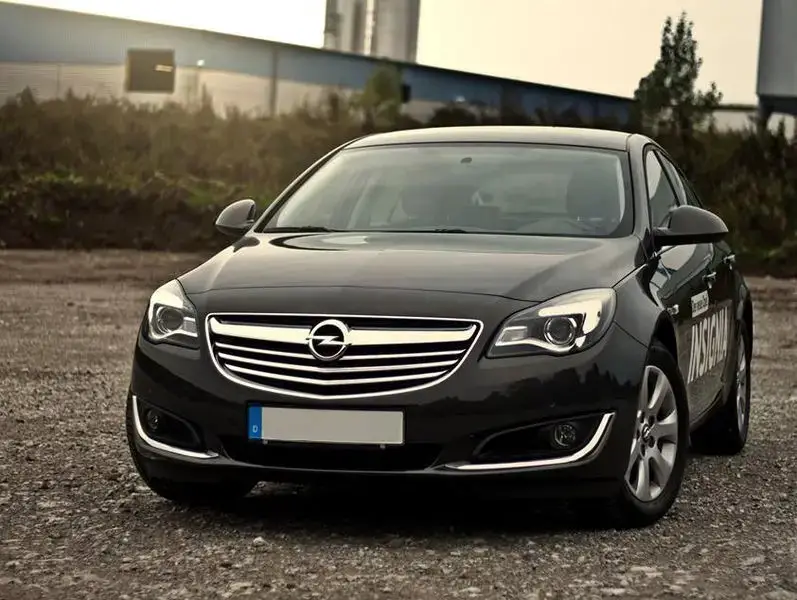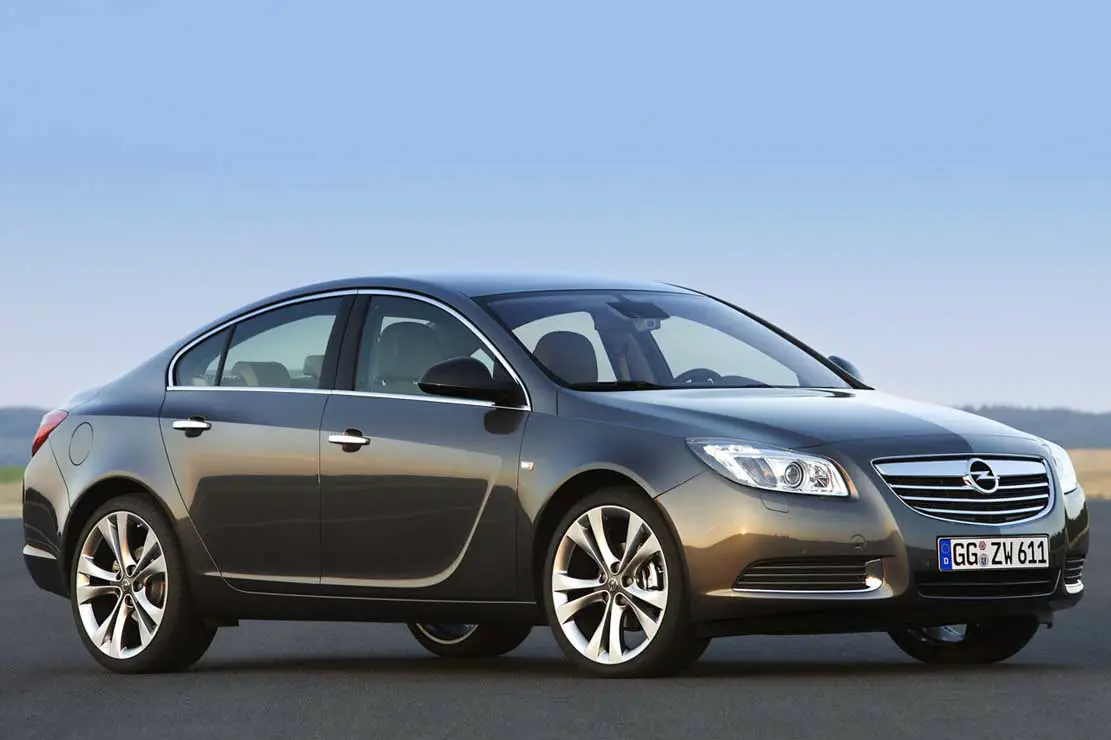Review: Vauxhall Insignia A ( 2008 – 2017 )

It’s hard to believe that in 2008 you could buy a new car that didn’t offer a warranty that you could go for a longer drive. Here’s how the Vauxhall Insignia A manages that feat and becomes one of the most disastrous modern cars. Here’s how they did it, in today’s article.
Coming to retirement in glory and fame, the Americans at GM launch the Vauxhall Insignia A, the last Mohican before the company is destroyed, and the corpse is placed in the lap of the French PSA. Serious issues overseas have severely affected car development in Europe, with Opel and Vauxhall divisions suffering. GM’s direction was clear, with the identical Buick Regal coming only with petrol engines and being a decent commercial success in the US.
The Buick Regal was successful because Americans aren’t as picky about interior quality as we Europeans are, nor did they have the disastrous diesel engines of the Vauxhall Insignia A. That’s because the engines aren’t even from Vauxhall, they’re going Italian once again. Buying engines from Italians is like ordering Indian food from a shady corner shop. It’s like calling a low quality TV channel with the intention of changing the tune for only 4 euros. Which could work out, but the americans decided to also fiddle about with the italian recipe.

Vauxhall Insignia A, the official car of programmers and corporate salesmen. A car that many bought new for its looks and low price compared to the competition. A car that many buy used today for its good looks and low price. And that’s the main concern with the Vauxhall Insignia A: it’s a great-looking car, but the low purchase price should give you pause for thought. If it were a person, the Vauxhall Insignia A would be an 18-year-old young lady who looks like 30 and goes to clubs just looking pretty. If it were food, it would be salmon with artichokes. If it was drinks, it would be Prosseco.
But people nowadays are willing to pay to maintain their image and appearances, even though the Vauxhall Insignia A is a cheap car to buy (you can even find it under 5000 euros) but expensive to maintain. Yes, it’s not the only car where appearances take precedence and reliability issues are big, but it should offer a minimum of reliability.

Vauxhall Insignia A Engines
Petrol
- 1.4 Turbo of 140 horsepower – The smallest engine in the Opel Insignia A comes with water pump issues, turbo issues, and one more issue that I will address in the joint section.
- 1.6 MPI of 115 horsepower – As muscular as James May, this engine deserves its existence only on the sales brochures, with prices starting at. An engine that was good on the Opel Astra H, but for the Insignia, it is already way too small and outdated.
- 1.6 Turbo of 180 horsepower – Same 1.6 naturally aspirated, with an added turbo and issues with thermostat.
- 1.8 naturally aspirated of 140 horsepower – You’d think this would be the most balanced petrol engine for the Opel Insignia A. And you’d be wrong. Serious issues with solenoid valves, actuators, and camshaft sprockets.
- 2.0 Turbo of 220 and 250 hp – This is the most balanced engine for the Opel Insignia A. Yes, it has issues and consumption to match, but the engine is absolutely spectacular and can come with a 4×4 system. You give a penny, but you know you don’t have it anymore.
- 2.8 Turbo of 280 and 325 horsepower – The old 2.8 was brought over from the Vectra C and launched in 2004 on the Cadillac CTS, this serving of American burgers comes standard with 4×4 and astronomical costs. An Opel Insignia A 2.8T 4×4 is one of the most American cars you can buy, a car that can go toe-to-toe with most European models. In the classic Opel Vectra spirit, it’s very hard to go faster with less money.
Diesel
- 1.6 CDTI of 120 and 136 horsepower – Available only on the post-2013 facelift variant, the 1.6 CDTI has proven to be a reliable engine, just undersized for the American Insignia.
- 2.0 CDTI of 110, 130, 160, and 195 horsepower – It’s hard to believe there could be a worse diesel engine than VW’s classic 2.0 TDI PD, but apparently the Italians have succeeded. Serious turbo issues, swirl flaps breaking and falling into the intake manifold killing the engine, cracked engine blocks, EGR, and particulate filters. Also, the famous O-Ring needs to be changed as soon as possible. The O-ring is a ring made of rubber that holds together the 2 plastic pipes that carry oil from the oil bath to the engine. Why wasn’t a simple iron pipe made? Because GM. What happens when this o-ring falls off? The engine runs out of oil and is destroyed in a few miles. Just like in the 2.0 TDI PD the oil pump shaft was knocked out, the engine ran out of oil and was destroyed in a few miles. Avoid the 2.0 CDTI engine in any form. The facelift EcoFLEX engines didn’t escape this issue either.

Vauxhall Insignia A General Issues
- The trunk opening switch can and will break down and needs to be fixed. Fortunately, you don’t have to change the hub as well, so you get off cheap.
- Particulate filter. In vast American intelligence, diesel engines start their regeneration and do their job, but if you shut the engine off during regeneration, the engine will restart the process from 0 the next time you start it. Unlike other manufacturers, where the engines will pick up where they left off when you shut the car off. So either you stay in the car and find your activity, or you inflate your particulate filter and engine.
- The starter motor breaks down, the battery dies and you’re left happily in the car park. The battery drains of power, your wallet empties of cash, your head empties of hair and you start contemplating the idea of a bike.
- Special mention for 4×4 systems – the seals wear out and you get a cocktail of fluids in your differential. After 80,000km it’s best to keep an eye on the seals otherwise it’s going to be a party in your car, no grease. Just like you’ll get a service bill – without grease.
- The radiator cracks on the lower left side. A little bit at a time, a little bit at a time, till there’s nothing left.
- Issues with the power steering line which is so well designed that it will let you do fitness in the parking lot while turning the steering wheel.
- Dual mass flywheel for diesel engines and clutches. In many cases, the dual flywheel can bend the crankshaft and you can easily buy another car.
- Electrical issues of any kind can range from the navigation not working properly to the engine stops running. It’s like playing Russian roulette.
- Serious issues with ABS and especially the rear brakes. The ABS corrodes and the brakes are effectively eaten by this living monument to reliability.
- The timing belt and auxiliary belt have a habit of jumping out of point, usually in motion. That means the engine can be ruined if you don’t move fast enough, and if you’ve stopped in time you have to call roadside assistance to tow you away and greet you wearing Armani suits because you’re not the first (or first) Insignia owner to call it a day.
- The 6-speed manual gearbox code M32 returns in spectacular and acrobatic fashion, ready to spontaneously explode when moving the 1.4 Turbo, 1.6 Turbo and 1.8 engines.
- On those with brown interiors the buttons on the console melt. On the black ones, the buttons wear out and fall off very quickly.

Vauxhall Insignia A verdict
Vauxhall Insignia A – the car for people who want something new, good-looking, and cheap. The only advice it gives is to buy a facelift model, after 2013, where a lot of work has been done on reliability. That still doesn’t make me recommend the Vauxhall Insignia A to anyone. The defunct VauxhallVectra C had a personality of its own – it was a big car, good for long straight drives, a car famous for understeer. It had character. The Vauxhall Insignia A instead remains in our memories only for its serious reliability issues.
Write an answer
- Review : Toyota Verso AR20 ( 2009 – 2013 ) 10 November 2025
- Review : Skoda CitiGO ( 2011 - 2020 ) 02 August 2025
- Review : Seat Mii ( 2011 - 2020 ) 02 August 2025
- December 2025
- November 2025
- October 2025
- August 2025
- July 2025
- April 2025
- March 2025
- February 2025
- January 2025
- December 2024
- November 2024
- October 2024
- August 2024
- July 2024
- June 2024
- May 2024
- April 2024
- March 2024
- February 2024
- January 2024
- December 2023
- November 2023
- October 2023
- September 2023
- August 2023
- July 2023
- June 2023
- May 2023
- April 2023
- March 2023
- February 2023
- January 2023
- December 2022
- November 2022
- October 2022
- September 2022
- August 2022
- July 2022
- June 2022
- May 2022
- March 2022
- April 2021
- January 2021
- December 2020
- November 2020
- October 2020
- September 2020
- August 2020
- July 2020
- March 2020